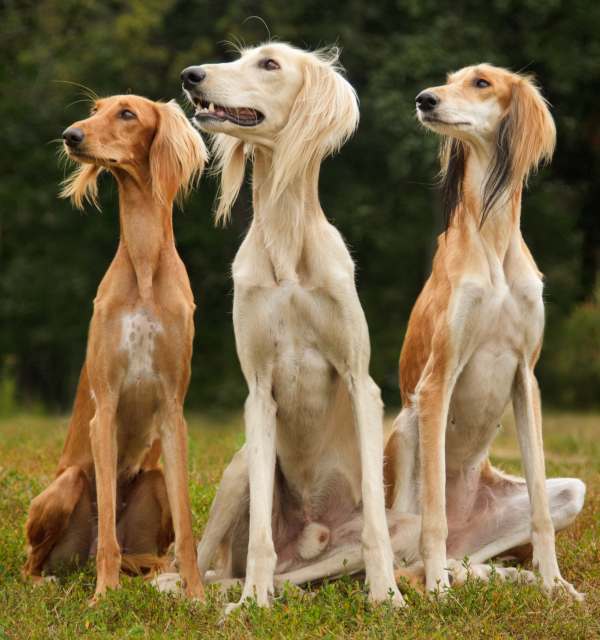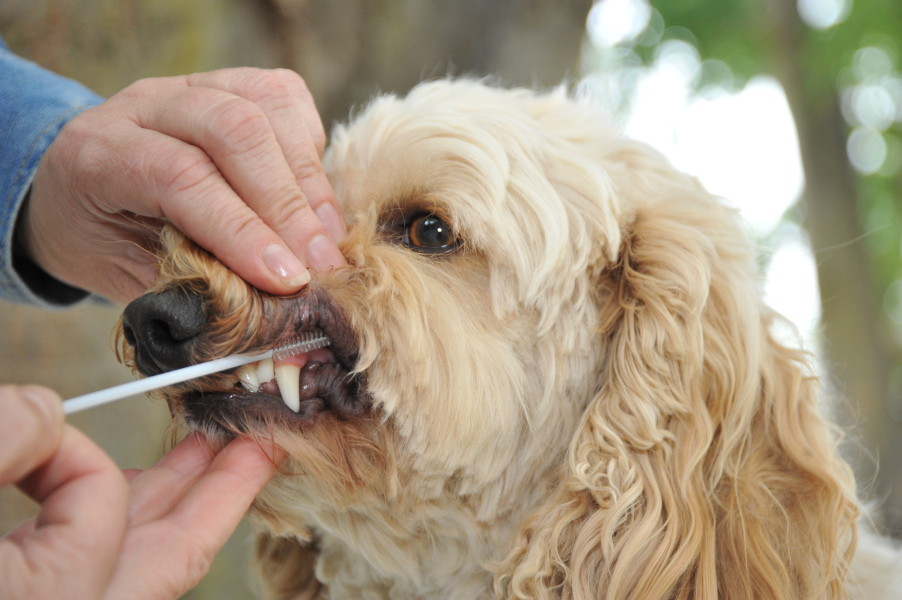Quick Summary

Click here for Price and Turnaround Time
Phenotype: Red and yellow pigment is diluted to cream or white hair. Black and brown pigment, if present, will remain undiluted.
Mode of Inheritance: Autosomal Recessive
Alleles: N = normal, In = intensity allele, dilution of phaeomelanin
Breeds appropriate for testing: Afghan Hound, French Bulldog, German Shepherd Dog, Leonberger, Puli, Saluki, Scottish Terrier. This variant may be present in other breeds with the extreme dilution phenotype.
Explanation of Results:
- Dogs with the N/N genotype are not likely to show the extreme dilution phenotype and cannot transmit the intensity dilution variant to their offspring.
- Dogs with the N/In genotype are carriers and likely will not show extreme dilution of phaeomelanin. They are predicted to transmit the variant to 50% of their offspring, and 25% of pups produced by mating of two carriers are predicted to have the extreme dilution phenotype caused by the intensity allele.
- Dogs with the In/In genotype have two Intensity dilution variants and will likely show dilution of phaeomelanin resulting in a cream to white phenotype. They will transmit the variant to all of their offspring.
Sample Collection
Dog DNA tests are carried out using cells brushed from your dog's cheeks and gums. The preferred cytology brushes are sent to you by mail, or you may provide your own brushes. For accepted alternative brushes, click here
We recommend waiting until puppies are at least three weeks old before testing.

Step-By-Step:
- Make sure the dog has not had anything to eat or drink for at least 1 hour prior to collecting sample.
- When swabbing puppies, isolate each puppy from the mother, littermates and any shared toys for 1 hour prior to swabbing. Puppies should not have nursed or eaten for 1 hour prior to collecting sample.
- If collecting samples from more than one dog, make sure to sample one dog at a time and wash your hands before swabbing another dog.
- Label brush sleeve with name or ID of dog to be sampled.
- Open brush sleeve by arrow and remove one brush by its handle.
- Place bristle head between the dog’s gums and cheek and press lightly on the outside of the cheek while rubbing or rotating the brush back and forth for 15 seconds.
- Wave the brush in the air for 20 seconds to air dry.
- Insert brush back into sleeve.
- Repeat steps 5 - 8 for each unused brush in sleeve on a fresh area of cheek and gums. Make sure to use and return all brushes sent by the VGL. In most cases, it will be 3 brushes per dog. If using interdental gum brushes, please note that the VGL requires 4 brushes per dog and only moderate or wide interdental gum brushes are accepted.
- Do not seal brushes in sleeve.
- Place all samples in an envelope and return to the address provided.
ATTENTION:
- Do not collect saliva/drool – the key to obtaining a good sample is getting cheek cells on the swab
- Do not rub swab on the dog’s tongue or teeth – this will result in poor quality sample
- Do not collect a sample from a puppy that has recently nursed – the mother’s genetic material can rub off on the puppy’s mouth and contaminate the sample
Mammals produce two kinds of pigment: eumelanin (black and/or brown in color) and phaeomelanin (red and/or yellow in color). Many genes contribute to the type and amount of pigment produced. Several breeds of dogs have an extreme dilution phenotype that has been shown to only affect the red pigment phaeomelanin. Hédan et al (2019) identified a single nucleotide change (c.151C>T predicted) in the first exon of the Major Facilitator Superfamily Domain Containing 12 gene (MFSD12) associated with the dilution phenotype. This change in the DNA results in an amino acid difference in the protein where cysteine replaces the normal arginine at amino acid 51 (p.Arg51Cys). This mutation is predicted to have damaging effect on protein function. MFSD12 is a gene identified to have a conserved role in vertebrate pigmentation with variants identified to impact pigmentation in zebrafish, human, mouse, and horse. MFSD12 is believed to function as a lysosomal transmembrane solute transporter directly affecting the production of phaeomleanin. In humans and horses decreased and/or non-functional MFSD12 has been implicated in reducing red/yellow pigment while increasing black/brown pigment. In dogs, the MFSD12 In variant has only been shown to decrease red/yellow pigment leaving black/brown pigment unaffected.
The degree of dilution varies within and between breeds with coat color ranging from cream to solid white. Population studies demonstrate that 10% of dogs homozygous for the In allele do not show the extreme dilution phenotype and 10% of extreme dilution phenotype dogs do not have two copies of the In allele. Additionally, roughly 2% of dogs with 0 or 1 copies of the In variant have the extreme dilution phenotype, and the extreme dilution variant does not appear to affect breeds fixed for phaeomelanin such as Irish Setters. Taken together, these results suggest the phenotype may be impacted by variants at additional genes. These additional genes are currently unknown.
